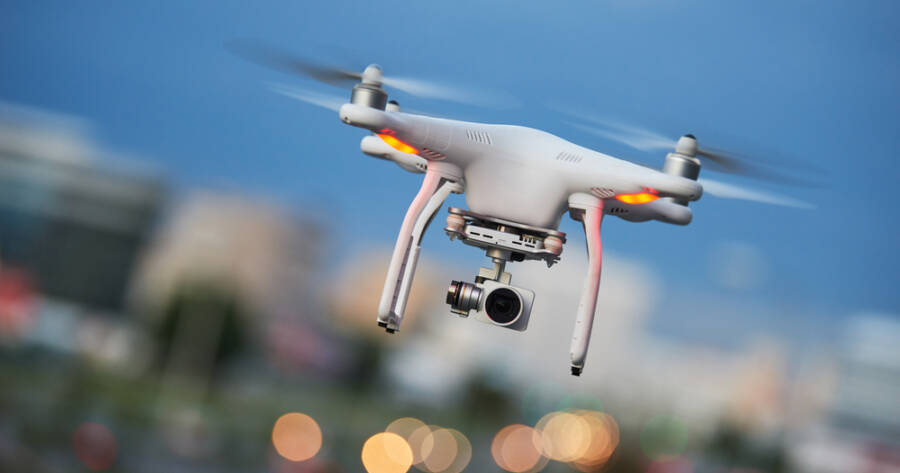In recent years, the industrial sector has witnessed a technological leap, with drones emerging as pivotal tools for infrastructure assessments. Their ability to access hard-to-reach areas and provide real-time data has streamlined traditional inspection methods. By employing drones, companies can potentially save time, reduce risks, and enhance the precision of assessments. This shift promises a new era in infrastructure analysis, inviting professionals to rethink how inspections are conducted, ensuring quality and efficiency across projects.
Understanding the Impact of Drone Technology
Drone technology fundamentally alters how inspections are conducted, delivering rapid advancements in the industrial landscape.
Enhanced Accessibility and Efficiency
Drones offer unparalleled access to infrastructure that is difficult to reach through traditional methods. They can swiftly navigate complex environments, from towering skyscrapers to sprawling pipelines. This capability significantly reduces the need for scaffolding, cranes, and other costly structures. By reaching these areas efficiently, inspections are conducted faster, reducing operational downtime and associated costs.
Real-Time Data Collection
The advantages of drones extend to data acquisition, providing inspectors with real-time, high-resolution visuals. Equipped with cameras and sensors, drones capture detailed images and thermal data, identifying potential weaknesses or damage in infrastructure components. This immediate feedback supports proactive maintenance strategies, allowing operators to make informed decisions regarding necessary repairs, ultimately enhancing the longevity and safety of inspected structures.
Transforming Safety Protocols
Safety remains a cornerstone in industrial operations, and drones contribute significantly to elevating safety standards.
Reduced Human Risk
Infrastructure inspections often place workers in perilous situations, such as scaling heights or entering confined spaces. Drones mitigate these risks by performing assessments without exposing personnel to hazards. By taking over these challenging tasks, drones minimize the potential for accidents, preserving worker well-being and aligning with safety protocols.
More Frequent Inspections
With the ease and speed drones bring to inspections, companies can increase the frequency of evaluations without significantly raising costs or risks. Regular assessments mean that issues are identified earlier, potentially avoiding expensive downtime and catastrophic failures. This continuous monitoring supports a proactive approach to maintenance, bolstering operational reliability and worker safety.
Innovating Inspection Techniques
The versatility of drones allows for novel inspection techniques, transforming industry practices.
Multispectral Imaging and Sensor Integration
Drones can be outfitted with multispectral cameras and various sensors, capturing data beyond the visible spectrum. This technology examines aspects like thermal performance and structural integrity, offering insights not readily available through human observation. Such comprehensive assessments provide a holistic view of infrastructure condition, guiding maintenance planning and resource allocation efficiently.
3D Mapping and Modeling
Another significant innovation is the ability of drones to create accurate 3D models of inspected sites. These maps facilitate detailed examination and tracking of changes over time, identifying subtle shifts or wear not apparent in two-dimensional data. Enhanced visualization promotes understanding and communication among stakeholders, enabling collaborative decision-making and precise project planning.
Overcoming Challenges in Implementation
While the benefits of drone inspections are tangible, several challenges require careful navigation to maximize their potential.
Regulatory Compliance
Drones operating within industrial settings need to adhere to stringent regulations governing airspace usage and data security. Different jurisdictions enforce varying rules, making compliance a complex task. Engaging with regulatory bodies early and staying informed of legislative changes are crucial for seamless integration into inspection routines, ensuring legal compliance and operational continuity.
Technical Limitations and Data Management
The technology supporting drone operations is robust but requires expertise in handling vast amounts of collected data. Efficient data management systems are essential to store, analyze, and interpret findings accurately. Investing in skilled personnel or partnerships with data management specialists can address technical limitations, harnessing the value drones offer effectively within inspections.
Expanding Applications Across Industries
The deployment of drones in inspections extends beyond infrastructure, finding applications across multiple sectors.
Energy Sector Advancements
In the energy sector, drones are instrumental in inspecting critical infrastructure like wind turbines, solar panels, and oil rigs. By assessing installations situated in remote or hazardous locations, drones contribute to maintaining energy production efficiency and safety. This technological advantage supports sustainable practices and the rapid expansion of renewable energy capabilities.
Transportation Infrastructure
Drones also play a significant role in inspecting transportation networks such as roads, bridges, and railways. Their ability to provide comprehensive visual data ensures infrastructure integrity and public safety, making inspections more thorough and efficient. The transportation sector benefits from reduced disruption and enhanced service reliability, essential aspects of efficient logistics operations.
Learn More Today
The integration of drones into industrial inspections heralds a transformative era in infrastructure assessments. Their capabilities—ranging from enhanced accessibility and reduced human risks to innovative imaging techniques—offer significant improvements over traditional methods. As industries continue to explore drone applications, their role may expand to cover broader operational aspects, ensuring infrastructure resilience and safety.
Embracing these technological advancements requires understanding their potential and addressing implementation challenges. Engaging with experts and ongoing innovation can unlock further benefits, making drones an indispensable component of modern infrastructure management. For companies seeking efficient, precise, and safe inspection solutions, investing in drone technology represents a step towards future-ready operations.




